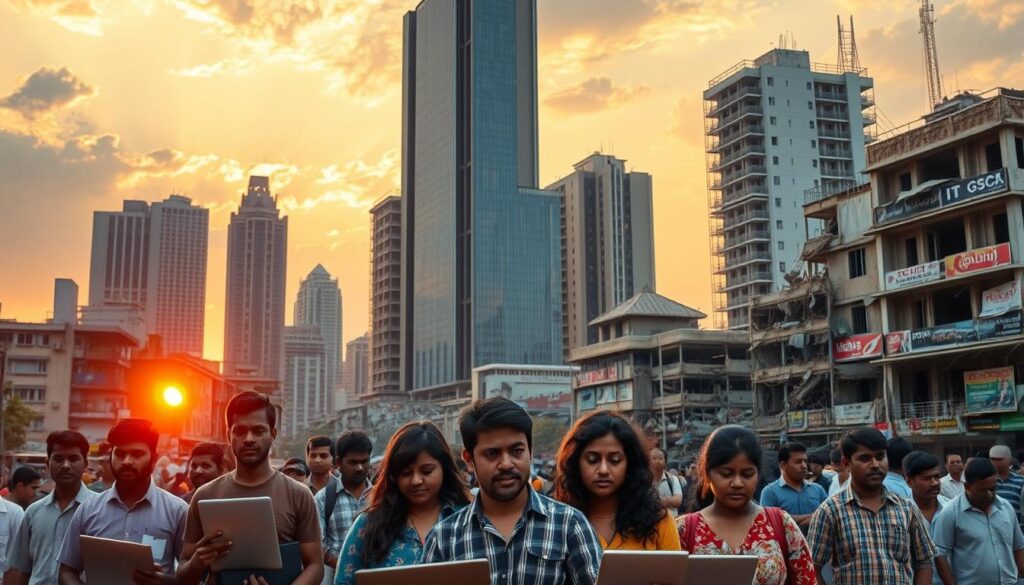Sri Lankans Are Positive About Religious Diversity
A significant move towards embracing religious tolerance is seen in Sri Lanka. Recent data shows that 62 percent of Sri Lankans view the country’s variety of religions, ethnicities, and cultures favorably. This acceptance of diversity thrives even though Buddhism remains a core part of Sri Lankan identity, with 95 percent of Buddhists seeing it as key.
In embracing different faiths, a large number of Sri Lankan Buddhists are up for living in harmony with other religions—81 percent with Hindus, 82 percent with Christians, and 75 percent with Muslims. Many Buddhists and Hindus also worship gods from religions other than their own. This underlines Sri Lanka’s special place in the world for religious integration.

Even with these forward steps, Sri Lanka is still figuring out its mixed-religion identity. The special status of Buddhism in its constitution stirs debate about secularism and its role in laws. While various religious customs are recognized, fewer people, 50 percent, think Islam fits well with Sri Lankan traditions as opposed to Hinduism and Christianity.
Key Takeaways
- 62 percent of Sri Lankans express positivity towards religious and ethnic diversity.
- Diverse religious practices are embraced, with remarkable instances of interfaith devotions among Buddhists and Hindus.
- There exists a notable wedge in perceptions of various religions, with Islam perceived less congruous with Sri Lankan culture.
- Religious tolerance coexists with active discussions on the extent of Buddhism’s influence in national governance.
- Amidst strides in religious coexistence, the underlying tensions reflecting past conflicts remain a consideration in societal progression.
As it moves forward, Sri Lanka continues to balance unity and differences in religion. These aspects are part of its wider journey, including a boom in tourism. They play a big role in the nation’s push for inclusive and lasting growth.
Understanding Sri Lanka’s Commitment to Religious Harmony
Sri Lanka is a place where many cultures and religions blend together. It values religious diversity and social bonding deeply. This island nation works hard to maintain peace among different faiths.
This is seen in its laws and how people from various religions work together for harmony.
The Cultural Significance of Buddhism in Sri Lankan Identity
Buddhism, especially Theravada Buddhism, is very important in Sri Lanka. It touches many parts of life like education and politics. About 70.2% of people follow it, making it a key part of the country’s identity.
People show respect for Buddhist teachings through their support for related laws. This shows a special mix of faith and government in action.
Interfaith Relations: Acceptance Across Religious Boundaries
Sri Lanka shows its open-mindedness towards all religions. The majority Buddhists join in and respect other religious practices. This mutual respect helps everyone live together peacefully in this diverse nation.
Such actions highlight Sri Lanka’s dedication to welcoming different cultures and beliefs.
Political Influence and the Role of Religious Leaders
Religion and politics are closely linked in Sri Lanka. Buddhist leaders often have a say in political matters. This shows how religion and government are intertwined.
Even so, people debate how much religion should influence politics. This shows a society trying to find the right balance between faith and a secular state.
In conclusion, Sri Lanka’s journey towards religious harmony is a model to follow. It shows the importance of embracing diversity and inclusivity. This commitment is key to keeping peace in a country with so many different beliefs.
| Religious Group | Percentage of Population | Influence on Public Policy |
|---|---|---|
| Buddhists | 70.2% | High |
| Hindus | 12.6% | Moderate |
| Muslims | 9.7% | Moderate |
| Christians | 7.4% | Low |
Sri Lankans Are Positive About Religious Diversity, Says Pew Survey
The Pew Research Center findings show Sri Lankans are embracing ethnic and religious diversity. Many Buddhists in Sri Lanka, who are 70.2% of the population, welcome neighbors of various religions. This shows Sri Lanka’s cultural strength and open-mindedness towards religious differences.
In Sri Lanka, people often join in interfaith prayers, which is special compared to other places. This practice shows deep respect and unity among different ethnic and religious groups. But, feelings about blending different cultures are mixed among the nation’s people. There’s a lively debate on how different religious communities should come together.
Even with some political tensions, Sri Lanka is making progress towards full religious acceptance. Education and city life don’t weaken religious beliefs in Sri Lanka, unlike in other countries. This unique cultural unity goes beyond economic differences.
The Pew report also mentions that most Sri Lankans see diversity as good for their country. About 56% believe that having people from various backgrounds makes Sri Lanka better. This attitude is key to building a united Sri Lankan identity that values all its cultures and religions.
Accepting diversity helps in strengthening community ties and improving Sri Lanka’s image worldwide. As the country works on its economy, being open and tolerant shows it’s adapting to global views on diversity and inclusion.
Exploring the Fabric of Sri Lankan Society
Sri Lanka is a beautiful mix of cultures and beliefs. It’s known for its religious diversity. These cultural traditions show up in everything from art to what people eat. Buddhism is big here, but so are Hinduism, Islam, and Christianity.
The country works hard to keep peace between all religions. Sacred places and festivals play a big role in this. They help shape how people live together.
Many studies look at religion and politics in Asia, including Sri Lanka. These studies show how religion and government are connected. Books and articles offer more insight into these connections.
This knowledge helps us understand how Sri Lankans keep their society together. They balance religious rights and social harmony.
Technology is bringing new challenges and opportunities to Sri Lanka. It’s breaking down old barriers. The internet can spread hate, but it also brings people closer.
Sri Lanka works to keep the internet safe. They’re trying to keep up with digital changes. They aim to keep everyone together, respecting all beliefs.
They’re figuring out how to mix traditional beliefs with new tech. It’s all about keeping the peace and moving forward together.


